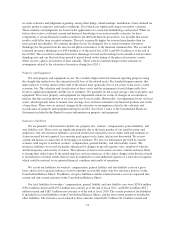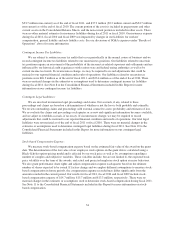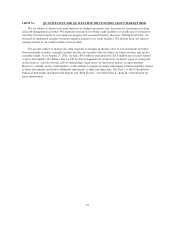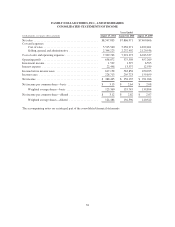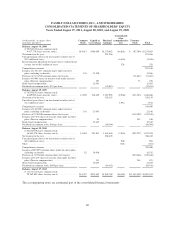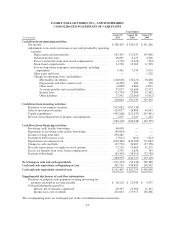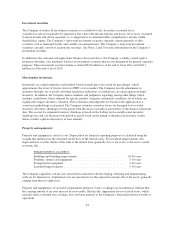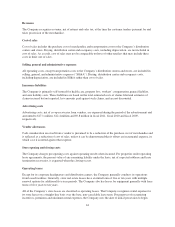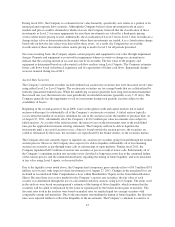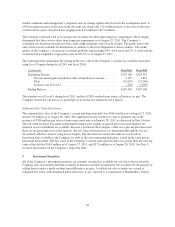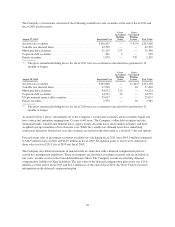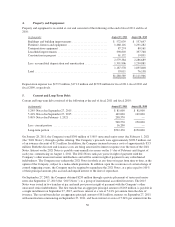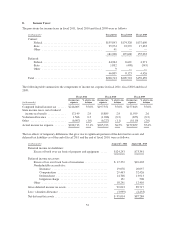Family Dollar 2011 Annual Report Download - page 47
Download and view the complete annual report
Please find page 47 of the 2011 Family Dollar annual report below. You can navigate through the pages in the report by either clicking on the pages listed below, or by using the keyword search tool below to find specific information within the annual report.
Investment securities
The Company classifies all investment securities as available-for-sale. Securities accounted for as
available-for-sale are required to be reported at fair value with unrealized gains and losses, net of taxes, excluded
from net income and shown separately as a component of accumulated other comprehensive income within
shareholders’ equity. The Company’s short-term investment securities currently consist primarily of debt
securities such as municipal bonds, and variable-rate demand notes. The Company’s long-term investment
securities currently consist of auction rate securities. See Notes 2 and 3 for more information on the Company’s
investment securities.
In addition to the cash and cash equivalents balances discussed above, the Company’s wholly-owned captive
insurance subsidiary also maintains balances in investment securities that are not designated for general corporate
purposes. These investment securities balances totaled $93.0 million as of the end of fiscal 2011 and $104.1
million as of the end of fiscal 2010.
Merchandise inventories
Inventories are valued using the retail method, based on retail prices less mark-on percentages, which
approximates the lower of first-in, first-out (FIFO) cost or market. The Company records adjustments to
inventory through cost of goods sold when retail price reductions, or markdowns, are taken against on-hand
inventory. In addition, the Company makes estimates and judgments regarding, among other things, initial
markups, markdowns, future demand for specific product categories and market conditions, all of which can
significantly impact inventory valuation. These estimates and judgments are based on the application of a
consistent methodology each period. The Company estimates inventory losses for damaged, lost or stolen
inventory (inventory shrinkage) for the period from the most recent physical inventory to the financial statement
date. The accrual for estimated inventory shrinkage is based on the trailing twelve-month actual inventory
shrinkage rate and can fluctuate from period to period based on the timing of the physical inventory counts.
Stores conduct a physical inventory at least annually.
Property and equipment
Property and equipment is stated at cost. Depreciation for financial reporting purposes is calculated using the
straight-line method over the estimated useful lives of the related assets. For leasehold improvements, this
depreciation is over the shorter of the term of the related lease (generally five or ten years) or the asset’s useful
economic life.
Estimated useful lives are as follows:
Buildings and building improvements ................................ 10-40 years
Furniture, fixtures and equipment ................................... 3-10 years
Transportation equipment .......................................... 3-10 years
Leasehold improvements .......................................... 5-10 years
The Company capitalizes certain costs incurred in connection with developing, obtaining and implementing
software for internal use. Capitalized costs are amortized over the expected economic life of the assets, generally
ranging from three to eight years.
Property and equipment is reviewed for impairment whenever events or changes in circumstances indicate that
the carrying amount of an asset may not be recoverable. Historically, impairment losses on fixed assets, which
typically relate to normal store closings, have not been material to the Company’s financial position or results of
operations.
43


